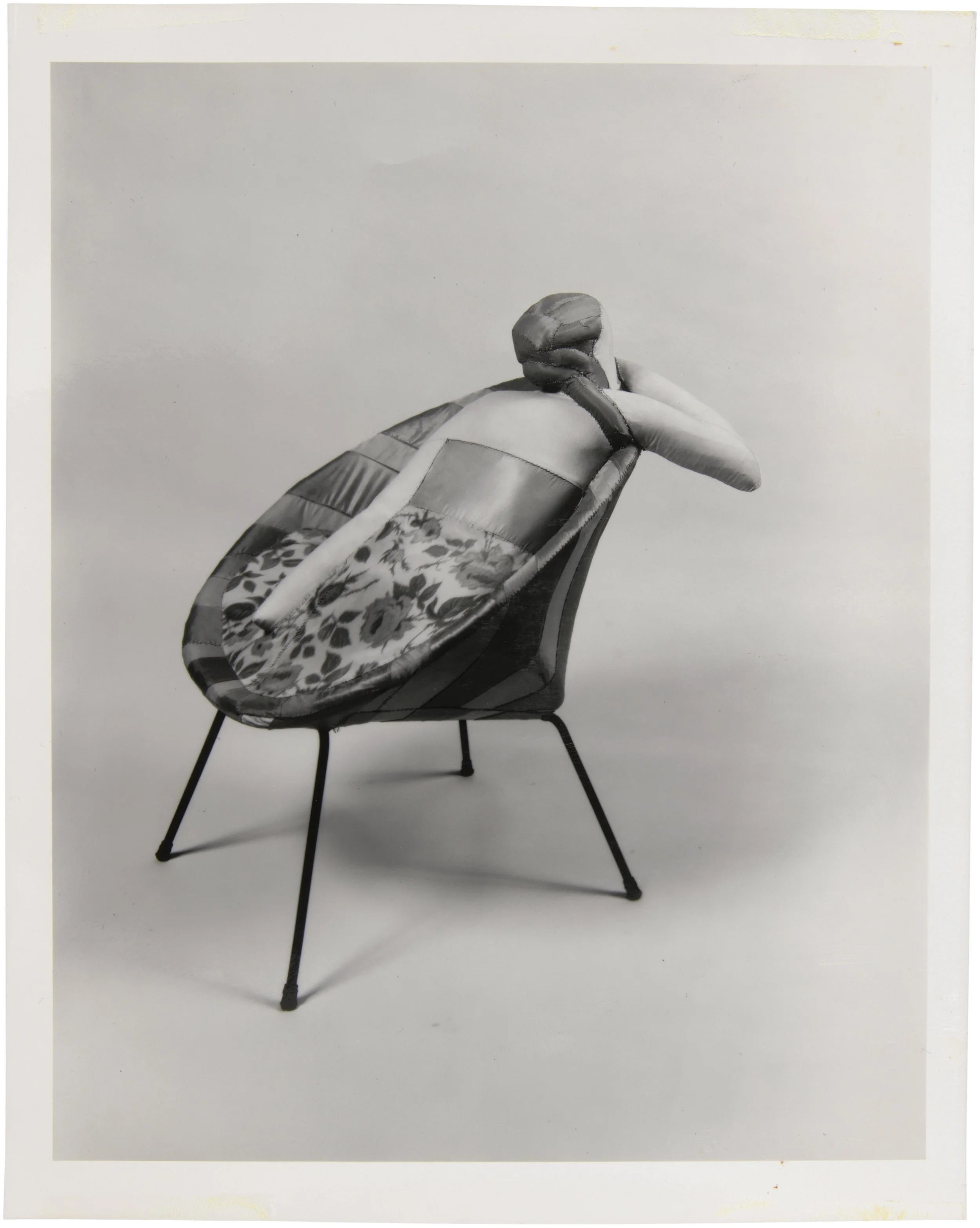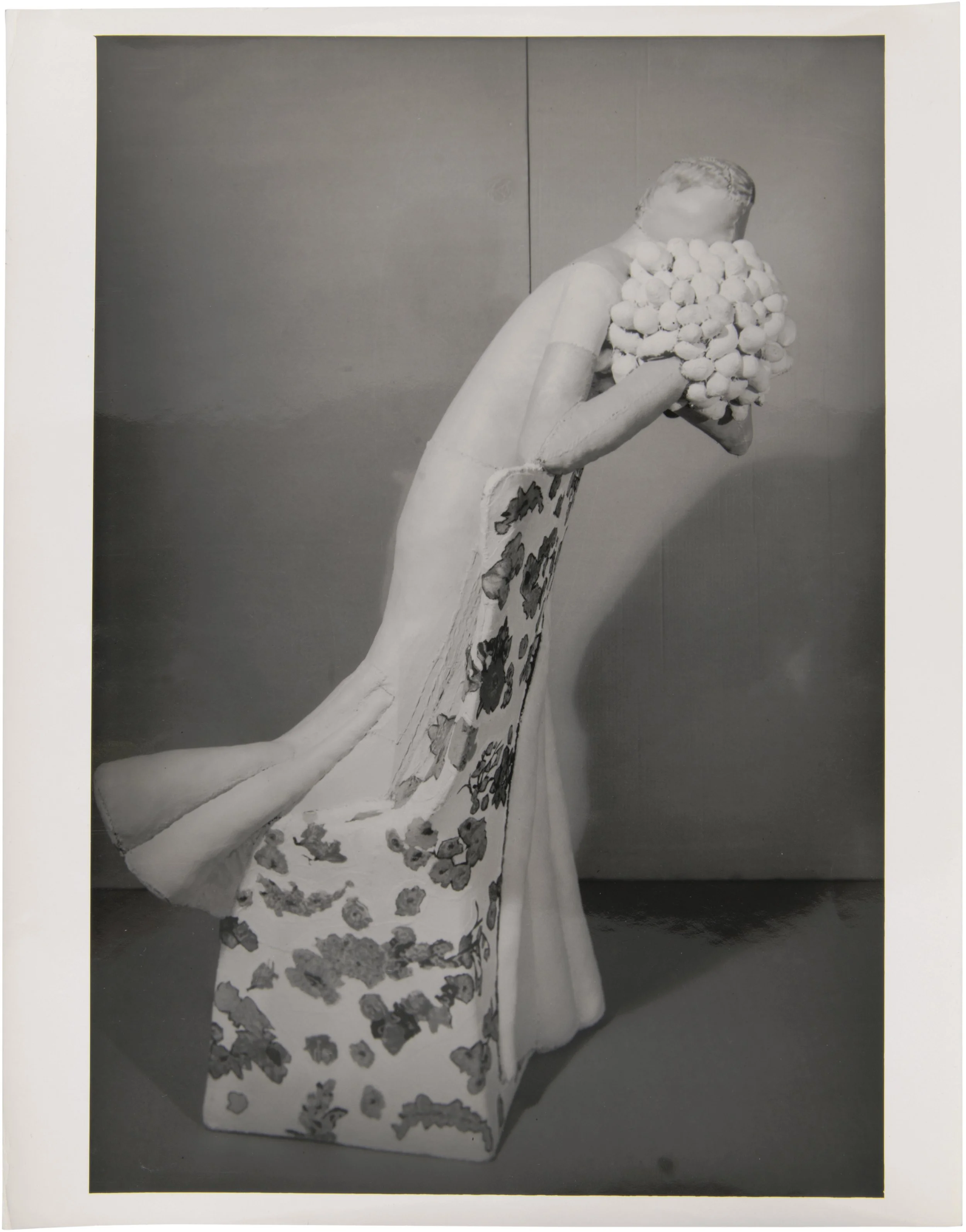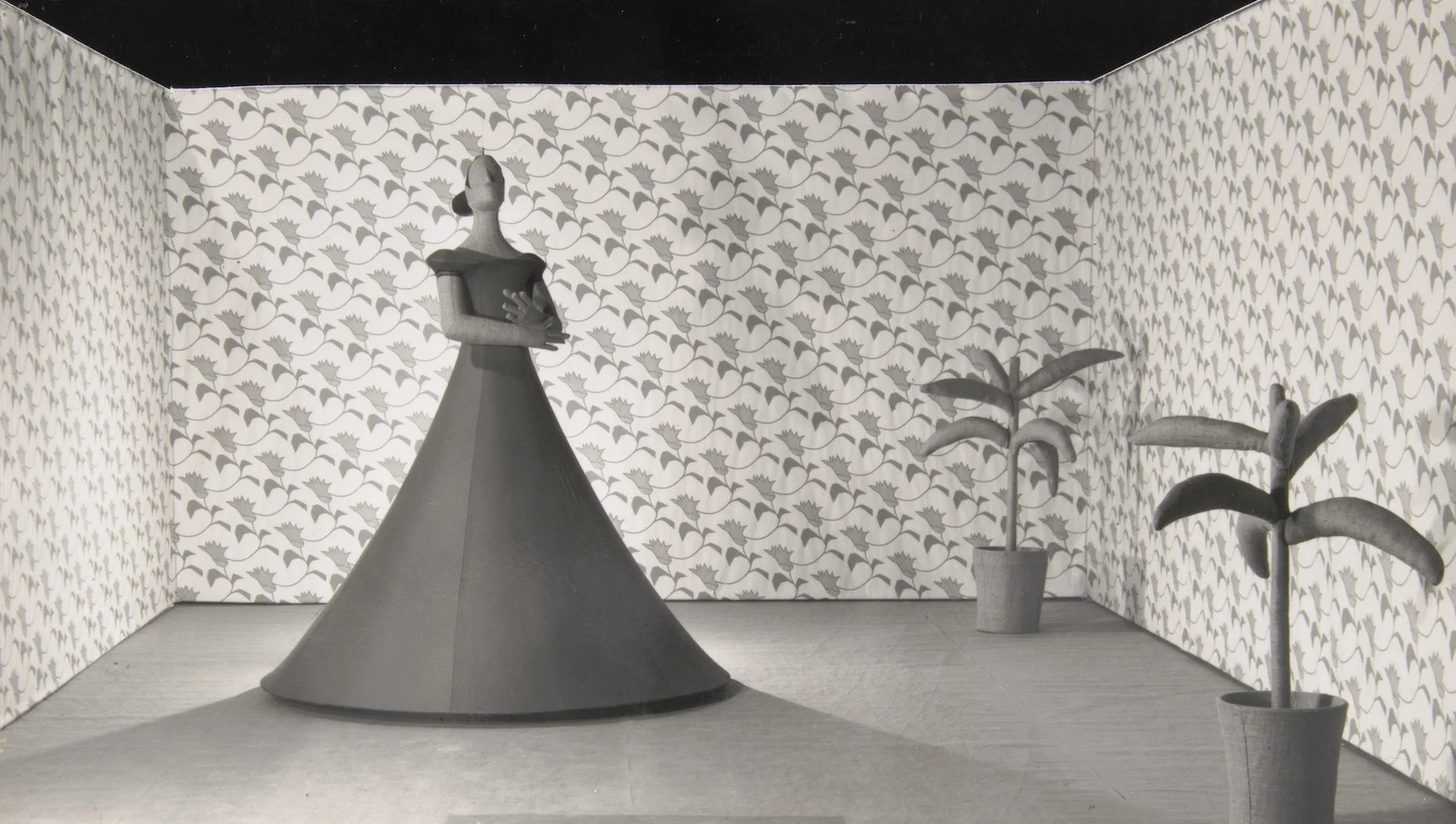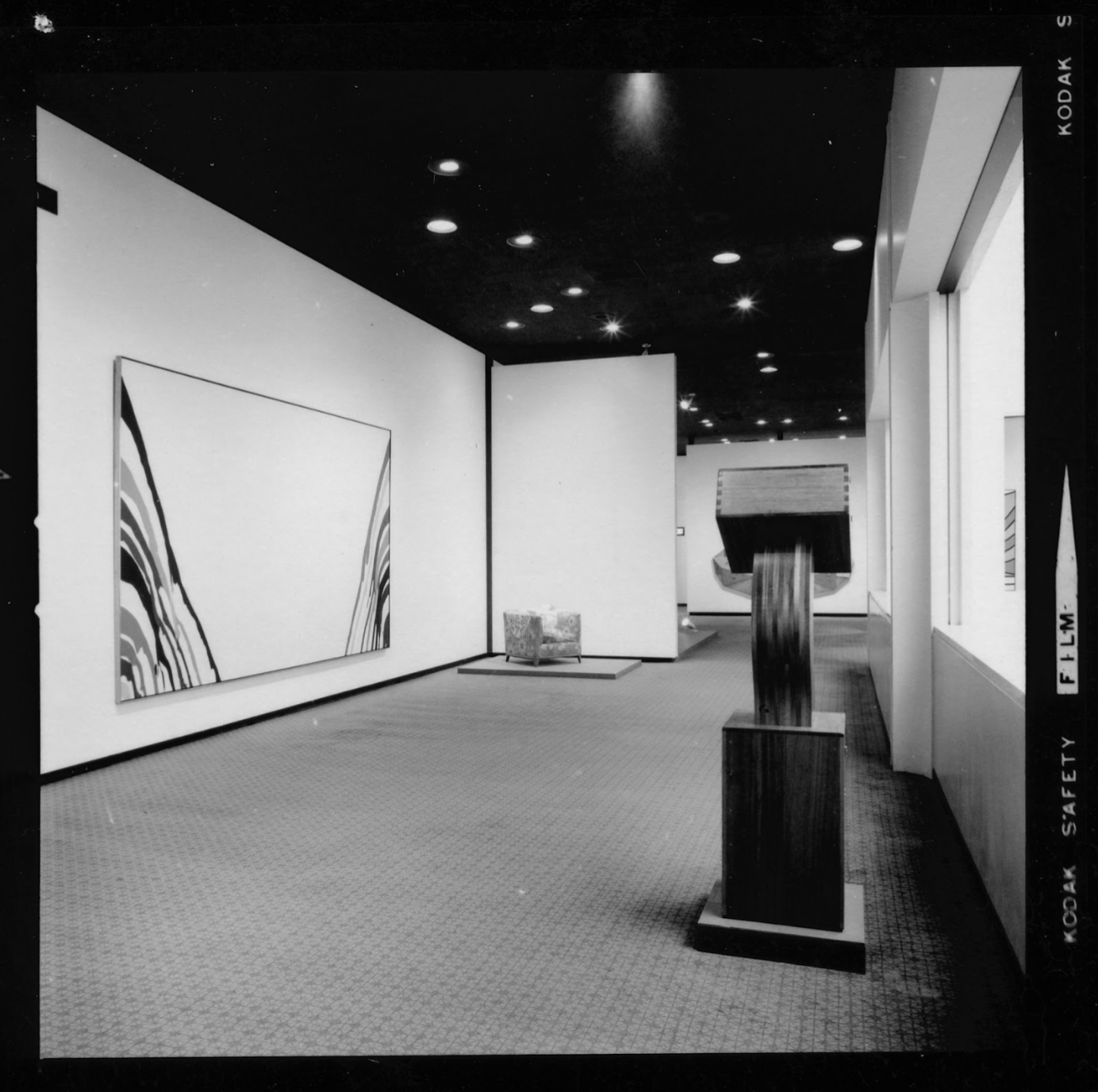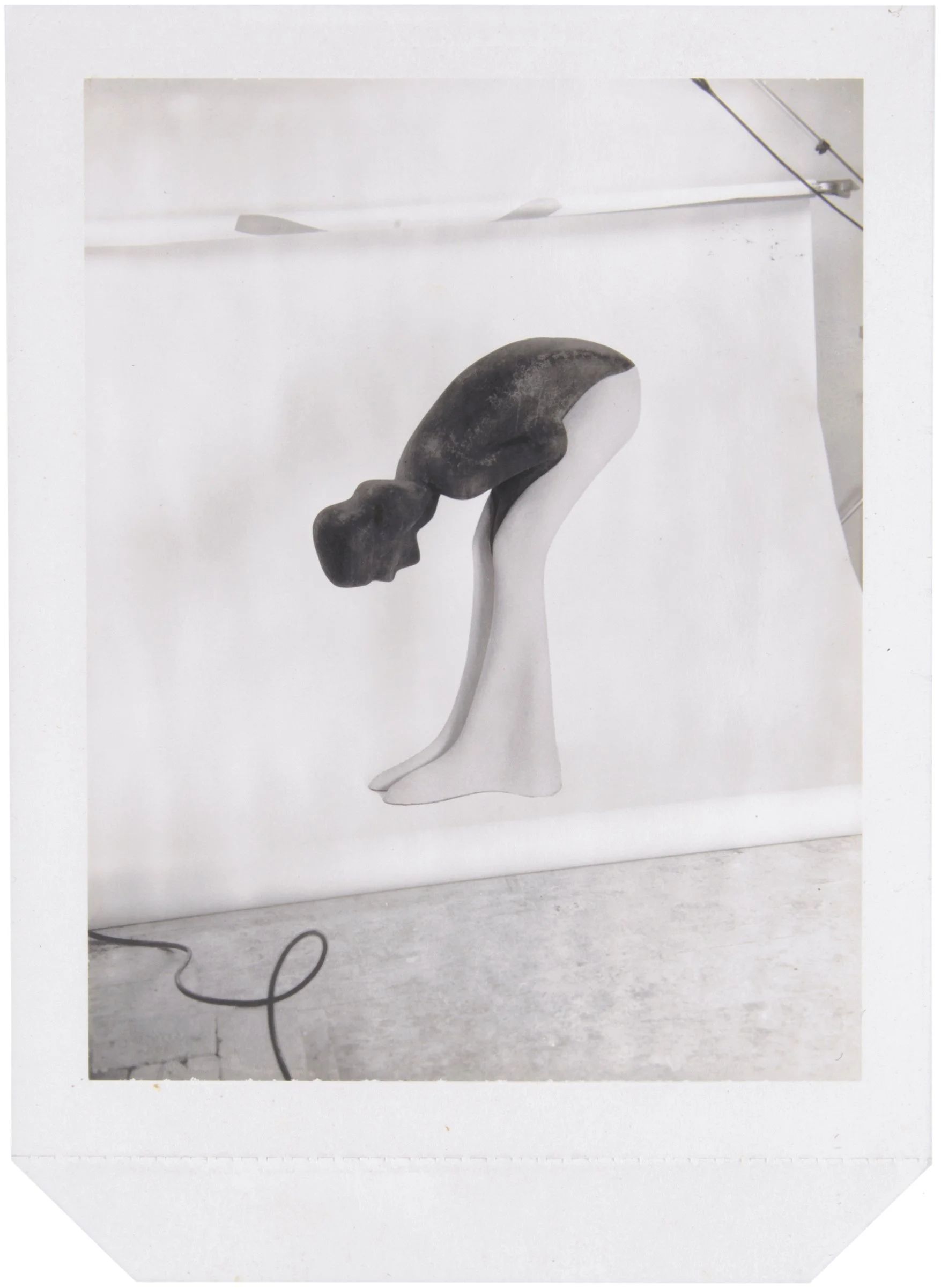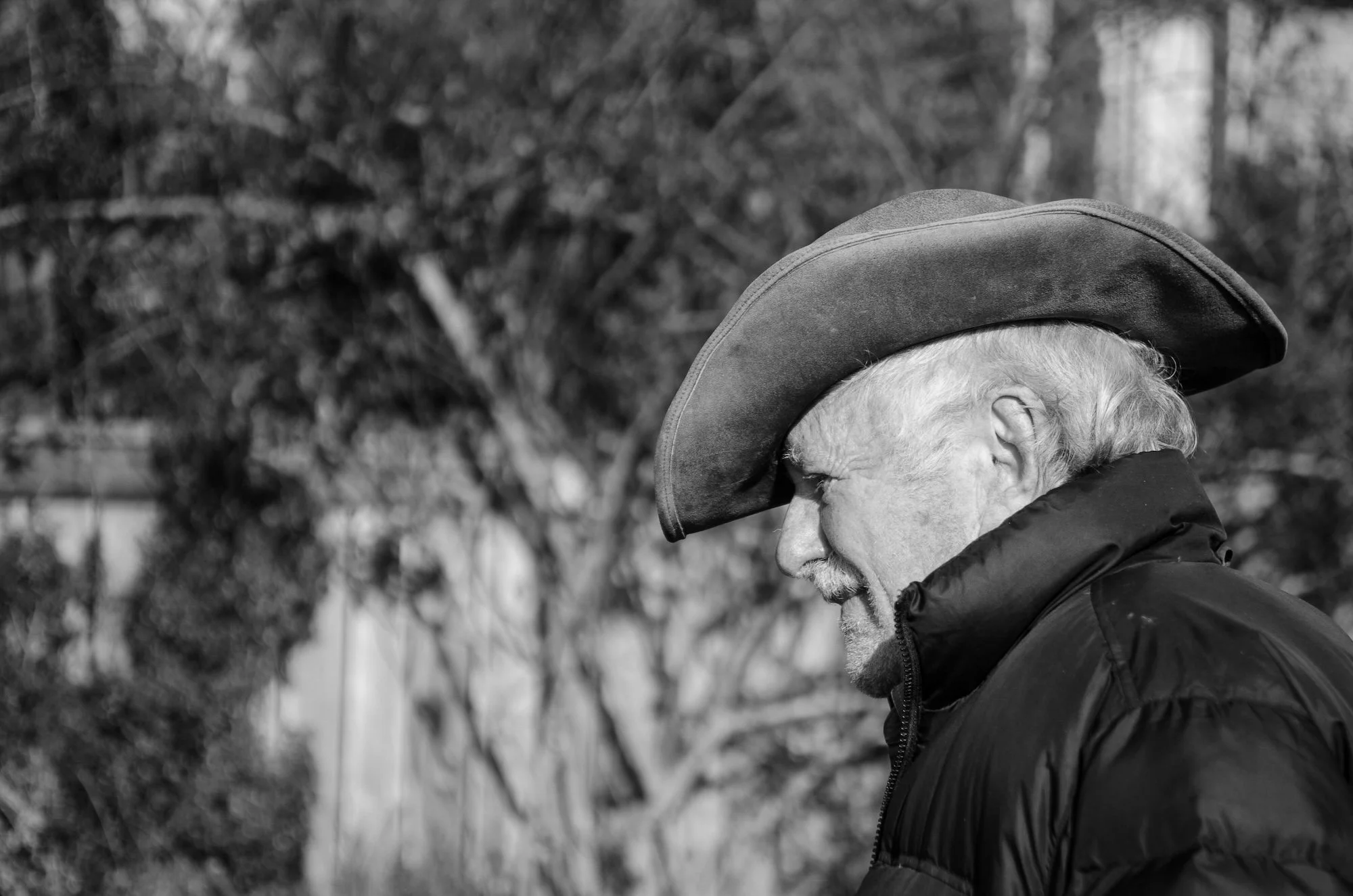
1970s
1970
Harris is on view in Paul Harris, a one person exhibition at Galerie M.E. Thelen, Essen, Germany throughout the month of April. Woman Looking Out to Sea (1965), Woman Smelling Her Roses (1966), and the woven string On the Grass a Lass (1962) are among the works on view.
Harris shows 18 lithographs from his newly completed The Shut-In Suite and a selection of bronzes and masks, from April 25 to May 21, at Poindexter Gallery in New York City, his last with the gallery.
Participates in group shows: Art 70, Basel, Switzerland; Kunstmarkt 70, Cologne, Germany; and Ruhrfestspiele, Recklinghausen, Germany.
Woman Looking Out to Sea, 1965, stuffed cloth on metal chair frame, 43 x 26 x 31 inches
Woman Smelling Her Roses, 1966, acrylic resin & ink on textile and wood, 60 x 24 x 42 inches
1971
Solo exhibition at the William Sawyer Gallery, San Francisco.
Participates in three group shows: San Francisco Art Institute Centennial Exhibition, M. H. de Young Memorial Museum; Made in California, Gruenwald Arts Foundation Gallery, University of California, Los Angeles; and Tamarind, A Renaissance of Lithography, International Exhibition Foundation, Washington, D.C.
1972
Paul Harris opens at the San Francisco Museum of Art (now the San Francisco Museum of Modern Art.). The solo exhibition consists of the biomorphic Anna Smelling Her Blooms (1968–72), Flo Waiting (1971–72), a sixteen-by-twenty-four-foot installation; Norissa Rushing (1970), and Ruth Williams Resting (1971–72). In an essay accompanying the exhibition, the late curator Suzanne Foley reflects, “His life-size stuffed female figures in their environments remind one of poems which reflect experiences of life, yet do not represent them. In ‘Norissa Rushing’ the figure in her flowing floor-length gown strides in the midst of four lollipop trees with lumpy profiles . . . On the trees alone the pattern of leaves and flowers visually plays against the lumpy forms so that a lively tension is created between surface and volume. The floral patterned gown of the woman seems to blend with the trees as if a Vuillard painting took on three dimensions.” In a riposte, Jerome Tarshis, a correspondent to Artforum, argues that, “Curator Suzanne Foley writes that these works resemble Vuillard in three dimensions, and, to a certain extent, I agree. But the essence of Vuillard is flatness—in poster, painting, or theater decoration—and although Harris as a painter of sorts reminds me of Vuillard’s social milieu of fabric design, the works themselves call up that frightening reality de Chirico found in plazas: colonnades, and manikins, and what we might find by walking at night in the grounds of a vast house, on an abandoned set from Last Year at Marienbad.” The exhibition travels to the University Galleries, University of California at Santa Barbara; the Art Gallery of the University of New Mexico; and the Arkansas Art Center, Little Rock.
Norissa Rushing, 1970, stuffed cloth and wood, 85 x 72 x 60 inches
Detail of Flo Waiting (1971–72)
Flo Waiting, 1971–72, partially stuffed cloth figure with cloth skirt on metal hoops hanging in room of painted canvas walls suspended from metal rods, 102 x 192 x 288 inche
Six Bottles (1969) is included in the group show Looking West alongside work by Tony DeLap (1927–2019), Richard Diebenkorn, Fred Eversley (1941–2025), Nathan Oliveira (1928–2010), and others at the ACA Galleries at 25 East 73rd Street in New York. Hilton Kramer writes in his review in The New York Times, that “the show . . . is something of a surprise. Forty-one artists who live on the West Coast and work in a wide range of styles and mediums are represented. It is a little like being treated to a West Coast edition of the Whitney Annual and singles out ‘a remarkable sculpture by Paul Harris.’”
1973
On the Grass a Lass (1962) is included in the group exhibition Anatomy in Fabric at the Los Angeles County Museum of Art, from February 21 to April 15. “The figures of Paul Harris have a sense of being at once illusory and real,” reads the exhibition catalogue text. “They seemed to be suspended in a dreamy private world which has assumed a tangible world . . . Their shapes are soft and simple, and the use of color and juxtaposition of patterns is distinguished by its wit.” In her review, Helene Winer, a postmodern specialist who had previously served as Director of the Museum of Art at Pomona College, writes that “Paul Harris’ [sic] stuffed sculpture is clearly the only complexly grounded accomplishment, and possibly the only art, in the exhibition. He was a forerunner in the broadening interest in sewn and stuffed forms and soft human representation.”⁴⁴
On the Grass a Lass, 1962, woven string on wood frame and metal frame, 80 x 120 x 140 inches
An installation photograph of The Kleiner Foundation: Gift of Contemporary Art, featuring Woman Laughing (1964) alongside a mural-size acrylic stained canvas by Morris Louis (1912–1962), Los Angeles County Museum of Art
Ruth Williams Resting (1971–72) and Flo Waiting (1971–72) go on view in the watershed Sewn, Stitched and Stuffed (1973–74) at the Museum of Contemporary Crafts in New York from April 12 to June 10. Curated by Sandra R. Zimmerman, the exhibition establishes textile-based sculpture as high art.⁴⁵ In her introduction, Zimmerman remarks that, “Fabric as a sculptural form has become a challenging and popular medium during the last several years . . . The structuring and embellishment of fabric with surface motifs and patterns are activities which have origins going back to the earliest history of mankind. Today, the techniques of the past merge with the technology of the present resulting in the creation of strongly individualistic styles.” Remarking on Flo Waiting, curator and critic Leah Triplett asserts that, “Unlike many of his soft sculptures of the period, Flo Waiting has a smoothness of surface—all of its edges flattened and seamless—that belies the full shapeliness of the stuffed technique. This flatness, coupled with the relationship between figure and ground, light and shadow, serves to emphasize the poignancy of the figure’s expectation and sensuality, as its objecthood is sneakily and neatly rendered into clean volume, shape, and spatiality, more traditionally associated with sculpture.”⁴⁶
Woman Laughing (1965) is singled out as an “indefinite loan” by Los Angeles County Museum of Art curator Maurice Tuchman, along with works by Larry Bell (b. 1939), Robert Irwin (1928–2023), and Lucas Samaras (1936–2024), and others, from the private collection of Beverly Hills businessman Burt Kleiner. In the introduction of the exhibition catalogue accompanying The Kleiner Foundation: Gift of Contemporary Art, on view from September 4 to November 11, Tuchman writes that the gift was negotiated “with the provision that I select the works to be included,” and that “the gift of California art provides us with certain high achievements of the past decade . . . and is the most important donation of contemporary art ever made by an individual to the Museum.” Harris’s fabric and cloth work is exhibited alongside a striking, mural-size 1973 acrylic stained canvas by the abstractionist Morris Louis (1912–1962) and subsequently enters the museum’s permanent holdings.
Harris also shows in the group exhibition Sculpture in Cloth at Contemporary Arts Center of Cincinnati.
1974
Harris establishes Wrongtree Press with Dorothy Schmidt. Publishes Torso, a cloth bound book with text by Dorothy Schmidt and lithographs by Harris.
Photographs of Paul Harris in his home, Bolinas, Calif., undated, Paul Harris Archives
Self Portrait, 1975, pencil on paper, 12 x 9 inches
1975
Harry N. Abrams, Inc. publishes the monograph Paul Harris. Sculptor, land artist, painter, collagist, and art critic Denis Leon (1933–1998), and chair of the sculpture department at California College of Art Crafts from 1973 to 1992, contributes the text’s essay, alongside sixty-six images in a variety of media and mediums. “Paul Harris has, thus far, explored several different modes and many kinds of materials: figures, masks, and heads made from plaster, paper, and bronze; object environments of woven and suspended fibers and fabrics; lithographs; and the stuffed sewn women made from cloth for which he is best known. This apparently restless shifting about is characteristic of many twentieth-century artists. The artist stands in relationship to his work in a role very similar to that of the witness as described above. Harris professes quite sincerely a great admiration for an artist such as Morandi—who daily seemed to be able to identify his search with a fairly restricted vocabulary of forms and, in so doing, cast himself more in the role of arbiter. In contrast, Harris has chosen himself and his own changing sensibility as a witness to be the constant factors in the changing situations of his forms and materials.”⁴⁷
Collaborates with Leni Alexander, a German-Chilean composer, on aspects of a ballet entitled A False Alarm on the Nightbell Once Answered based on The Country Doctor, a story by Franz Kafka.
1977
Begins work on drawings for Pas d’Une—a limited edition, unbound collection of hand silk screen prints he will publish in 1982—at the MacDowell Colony in New Hampshire. At the residency, he lives and works inside the architecturally significant Alexander studio, named after the portrait painter John White Alexander (1856–1915) and characterized by its full-height windows and large stone arch. Milton Avery (1885–1965), the American painter and printmaker, worked in the same studio in 1953, 1954, and 1956.⁴⁸
Participates alongside Robert Arneson, Claes Oldenburg, Robert Rauschenberg, Lucas Samaras, Saul Steinberg (1914–1999) and others in The Object as Poet at the Renwick Gallery of the Smithsonian American Art Museum, on view from December 15, 1976 to June 26, 1977. The show is organized by Rose Slivka, editor of Craft Horizons, the magazine of the American Crafts Council, with the guidance of poet Stanley Kunitz, who in 1968 founded the Fine Arts Work Center in Provincetown with Robert Motherwell (1915–1991), Myron Stout (1908–1987), Jack Tworkov (1900–1982), and others.
1978
Receives a Lebovitz Family Grant for the printing of Pas d’Une, which will be published in 1982. Yarowsky, writing in 1996, remarks that “Pas D'Une is a tale told by twenty prints without a written word. A theater, black as night, is slowly lit revealing a richly ornamented curtain. As the curtain opens it presents an empty stage and, ultimately, one lone dancer who in mid-performance is annihilated by an ominous shadow. At her death the dancer is transformed into a rose . . . The action completed, the story will be played again and again—an infinite number of times in the forever and ever. The almost light-hearted resignation in this pictorial sequence tells us that the tragic in life is redeemable by beauty.”⁴⁹
Woman Bending Over, 1978, bronze,
41 x 29 x 16 inches
Paul Harris with Woman Bending Over (1978), undated, Paul Harris Archive
-
⁴⁴Helene Winer, art review, “‘Anatomy in Fabric’ Museum Exhibit at Museum,” Los Angeles Times, March 5, 1973.
⁴⁵Triplett, biography of Paul Harris.
⁴⁶Triplett, “Paul Harris: Interior Interests.”
⁴⁷Denis Leon, foreword to Paul Harris, (Abrams, New York: Harry N. Abrams, Inc., 1975)
⁴⁸Macdowell, “Paul Harris,” https://www.macdowell.org/artists/paul-harris
⁴⁹Morris Yarowsky, foreword to Paul Harris Drawings, (University of Washington Press, Seattle & London, 1996).

